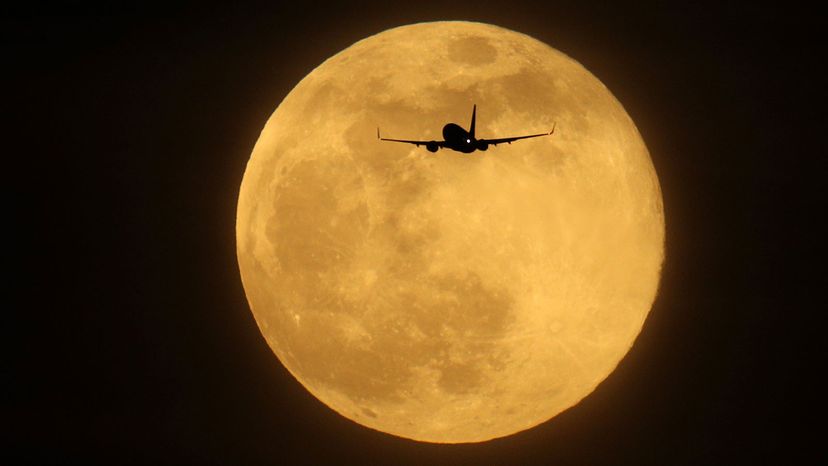
Image: Dan Kitwood/Getty Images
About This Quiz
In the darkness of space, we're comforted by our moon, the circular inspirer of song lyrics, poetry and wannabe astronauts. But what do you really know about the moon and its history? Take this quiz to find out.
What makes a moon a "supermoon"?
It's the full moon that immediately follows the winter solstice.
It's a full moon with a reddish tinge.
It's a new or full moon that occurs in closer proximity to Earth than usual.
A supermoon means the moon is roughly 30,000 miles (50,000 kilometers) closer to Earth than at other times during the year. On average, there are four to six supermoons per calendar year.
How much brighter than a regular moon can a supermoon be?
20 percent
30 percent
A supermoon can be as much as 30 percent brighter than a regular moon. "Supermoon" is a relatively new term, as it was coined by astrologer Richard Noelle in 1979.
50 percent
Which of the following statements about the moon is TRUE?
The moon actually has very little effect on Earth's ocean tides.
The moon has almost no atmosphere.
Conventional wisdom said that the moon had no atmosphere. There's no air, and thus, no wind. But recent research shows that the moon does have a tiny bit of atmosphere, one containing potassium and sodium, neither of which are found in Earth's atmosphere.
Humans weigh about 50 percent less on the moon due to the moon's lower gravitational pull.
Advertisement
If you could drive a car from Earth to the moon at a speed of 60 mph, how long would it take you to reach the moon's surface?
about one month
about a year
about six months
On average, the moon is 238,900 miles (384,472 kilometers) from Earth. If you could drive a car at 60 mph (95 kph) through space to the lunar surface, it would take you about six months to arrive at your dusty moon destination.
Which nation was the first to send a successful unmanned mission to the moon?
France
Soviet Union
It was an event that escalated the space race into a space sprint - on Sept. 14, 1959, the Soviet Union successfully executed its Luna 2 mission. It was the first spacecraft ever to reach the surface of the moon.
USA
The farthest point between the moon and Earth is called the:
perigee
apogee
The apogee is the point in orbit when the moon is farthest from Earth (the perigee is when it's closest).
epogee
Advertisement
The full moon in March is called the:
worm moon
In many parts of the Northern Hemisphere, the weather begins to warm in March, and the earthworms stir after their winter slumber. Worm castings appear on the ground, causing people to call the March full moon the "worm moon."
strawberry moon
wolf moon
In 1958, the United States researched a moon-oriented plan named Project A119, which was never carried out. What was the purpose of this plan?
to detonate a nuclear weapon on the moon's surface
The U.S. was losing the space race, in part because the Soviet Union's successful Sputnik missions. U.S. leaders concocted Project A119, which would have detonated a nuclear bomb on the moon's surface, partly for scientific reasons, but more as a show of American military might. The plan was scrapped due to concerns that people would react negatively.
to create a manned colony on the moon
to mine the moon for valuable minerals
How many successful manned missions have landed on the moon?
4
8
6
The United States landed the first men on the moon in 1969, and followed that feat with five more manned missions. In total, 12 men have set foot on the moon. All of them have been Americans.
Advertisement
In popular lore, what is a blue moon?
the second full moon in a calendar month
A blue moon is usually the second full moon in a calendar month. It used to mean the third full moon in a season, but the definition has shifted over time.
the third full moon in a season (like summer)
a moon with a slightly bluish tinge, usually seen once every 20 years
You Got:
/10
Dan Kitwood/Getty Images